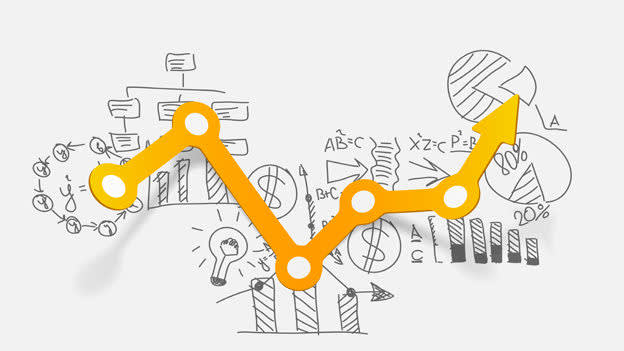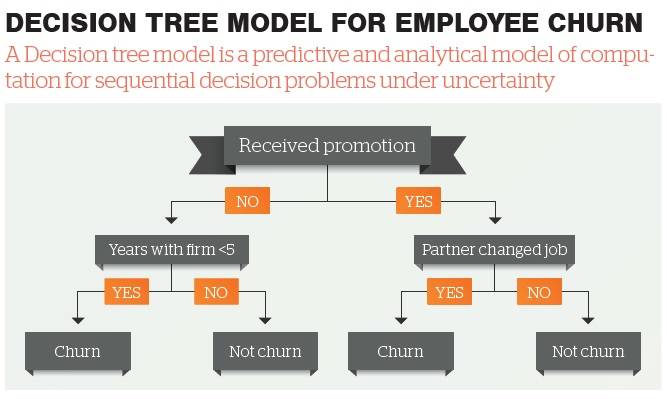Strategic importance of HR can shoot up with Analytics

Big Data & Analytics are terms that frequently pop up in newspapers, magazines, airports or even during pub chats to start a conversation. IBM projects that every day we generate 2.5 quintillion bytes of data. In relative terms, this means 90 percent of the data in the world has been created in the last two years. Both technologies have proven their potential for risk management, fraud detection and marketing, but what about HR? Well, unfortunately, not many success stories to report yet despite the unquestioned strategic opportunities and low hanging fruit to be harvested. In fact, many HR managers talk about it, but nobody knows how to tackle it, thinks the others are doing it and hence may be tempted to claim doing it as well. How come Big Data & Analytics have not matured yet as fully competitive strategic HR instruments, allowing you to better understand the behavior of your key asset: your employees! In this article, we will shed some light on this, but let’s first set the stage by zooming into some interesting analytical HR applications and discuss the key requirements of analytical HR models.
Examples of analytical HR applications
Firms typically gather masses of data regarding the behavior of their employees like staffing data, performance and productivity data, engagement data, payment data, task specific data, etc. This Big Data avalanche is often characterized in terms of the 4 V’s: high volume, high velocity, high variety and hopefully good veracity. By thoroughly analyzing, managing and exploiting your Big Data sources using state-of-the-art analytical techniques, it becomes possible to understand hidden patterns of employee behavior which can subsequently be translated into strategic actions, creating an added value and thus competitive advantage.
Various examples can be thought of to successfully leverage Big Data & Analytics in HR. First application can be in analyzing employee churn. Great talent is scarce, hard to keep and highly solicited by headhunters! Hence, it becomes important to understand the drivers of employee dissatisfaction. Big Data & Analytics can be used for this purpose. The first step in doing this is to collect historical data on employee churn. The next step is to consolidate all data, aggregate and clean it so that it becomes ready for analysis. An analytical model can then be built to predict employee churn. The figure shows an example of a decision tree, which is one of the most popular analytical models in use in the industry nowadays. It can be automatically constructed from a (big) data set and gives clear insights into which employees churn and which ones not.

Another interesting application of HR Analytics is in analyzing employee absenteeism. Employees may be absent due to illness, accidents or burn out. Especially the latter has received wide attention recently. Using Big Data & Analytics, it is now possible to adequately understand the drivers of employee absenteeism and act upon it before the problems start to occur.
HR Analytics can be applied to understanding workforce collaboration patterns using social network techniques, job recruitment based upon intelligent recommender systems, career path analysis using sequence rules, talent forecasting, etc.
Requirements of successful analytical HR models
Various requirements should be met for analytical HR models to be successful.
A first key requirement is business relevance. The analytical model should solve the HR problem that it was developed for! It makes no sense to have a high-performing, nice analytical model that got sidetracked from the original HR problem. In other words, if the HR problem is detecting employee churn, then the analytical model must be sure to detect employee churn. Some example kick-off questions are: how do we define employee churn? How do we deal with employees that reduce their appointment to part-time? How do we treat boomerang recruits? etc.
Next, analytical HR models should be built using sound and solid quantitative techniques aimed at analyzing the underlying data as accurately as possible from a statistical perspective. The analytical models built should be accompanied by various metrics indicating the statistical significance of the model.
Another requirement is that the analytical techniques should yield models that are understandable to the HR manager. It makes no sense to come up with a complex, black-box analytical model backed up by solid and complex statistical theory, but providing no interpretable and thus actionable HR insights. The decision tree figure illustrated is a nice example of a white-box analytical model that can be easily understood by its users.
The introduction of Big Data and Analytics brings new privacy concerns. Privacy issues can arise in two ways. First, data about employees can be collected without them being aware about it. Secondly, employees may be aware that data is collected about them, but have no say in how the data is being used. Hence, it is important that analytical HR models are built in a regulatory compliant way whereby the employees are well-informed about which data is collected and how it is used.
Finally, however beautiful a new, emerging technology is, one should occasionally evaluate its economic impact. More specifically, the total cost of development and ownership of an analytical model should be contrasted with the returns gained. Although the latter may be hard to quantify, they are an essential element to get management buy-in and make the necessary investments.
Hurdles to overcome
As already mentioned at the start of this article, despite its potential, not many successful applications of HR Analytics have been reported yet in the industry. This can be attributed to various reasons as we will discuss in what follows.
First of all, HR is still struggling with the perception of being less strategically important than e.g. risk management, marketing, logistics, etc. Hence, it is usually the last in line to benefit from new technologies such as Big Data & Analytics. This is unfortunate, given the tremendous potential of both for improving the HR function.
A next barrier concerns the skills needed to work with both technologies. For example, the job profile aimed for is one of data scientist. In the industry, there are strong misconceptions and disagreements about what constitutes a good data scientist. In fact, a data scientist should possess a multidisciplinary mix of skills: ICT (e.g. programming), quantitative modeling (e.g. statistics), communication and visualization, business understanding, and creativity. It is quite obvious that this is a unique skillset and not many universities world-wide are offering educational programs for data scientists yet. This explains why there is currently a huge international shortage for this job profile. Some organizations are setting up in-house training and coaching initiatives to turn some of their employees into data scientists. Others are considering outsourcing as a possible solution. Despite the short-term benefits of the latter, it should be approached with a clear strategic vision and critical reflection with awareness of all risks involved.
Another attention point is employee unions. In strongly unionized countries, companies have to provide clear justifications of how they intend to utilize Big Data & Analytics for studying their workforce behavior. It is in our human nature to approach any new technology with a certain degree of anxiety. Hence, it can be anticipated that unions might also be skeptical towards this. To remedy this, it is of key importance to introduce both technologies as facilitators or opportunities rather than a looming danger or treat, and clearly illustrate how working conditions and/or employee satisfaction can be improved as a result of their usage.
In this article, we zoomed into HR Analytics and started off by reviewing some example applications, which was followed by a discussion of the key requirements to build successful analytical HR models: business relevance, quantitative underpinning, interpretability, regulatory compliance and economic return. We concluded by zooming into some of the hurdles to turn Big Data & Analytics into a mature, value-adding HR instrument. As discussed, many of these can be overcome by continuous education and creating awareness of the potential of Big Data & Analytics across all decision levels of the firm! This will allow companies to stay ahead of the competition and spearhead the development of new HR analytical applications.







![E-book: HR Analytics and You [Download Now] E-book: HR Analytics and You [Download Now]](https://res.cloudinary.com/people-matters/image/upload/w_220,h_124,c_thumb,q_auto,f_auto/v1707908296/1707908294.jpg)



